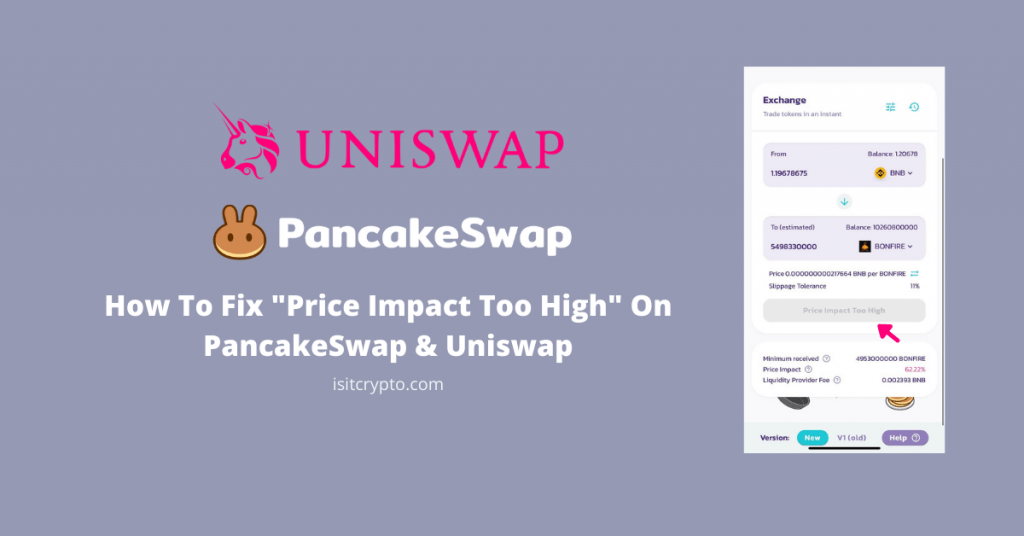
Decentralized exchanges like PancakeSwap and Uniswap have become one of the go-to decentralized applications for swapping tokens on the Binance Smart Chain and the Ethereum blockchain respectively.
Even with their rise in popularity amongst crypto enthusiasts, these DEXes are not quite there yet in terms of usability as many users of these exchanges face countless errors daily while trying to swap tokens.
One of many errors faced by users especially on PancakeSwap is the “price impact too high” error which shows up in some cases when a user tries to swap one token for another.
If you’re currently facing the dreaded “price impact too high” error on PancakeSwap and in some cases, Uniswap, then you’re not alone as many users have also complained about this problem.
The good thing is that there are a few workarounds to this issue and in this post, you will learn just how to fix the “price impact too high” error means and how to fix it easily.
What Does “Price Impact Too High” Mean On PancakeSwap & Uniswap?
Like many others who have encountered this error in the past, you might want to understand what the “price impact too high” error means and why it appears when you try to swap a particular token on PancakeSwap (or Uniswap).
Price Impact simply means the influence (or impact) of a user’s trade on the price of the underlying asset pair e.g. BNB or ETH pairs with the token in question (SAFEMOON/BNB, SHIB/ETH, etc).
The price impact is directly correlated with the liquidity of an asset pair. The lower the liquidity of a token pair, the higher the price impact when someone swaps a token for another in the pool.
“Price impact too high” means that there is very little to no liquidity in the liquidity pool of the token pair you want to swap. When there is no liquidity or little liquidity in the pool for the token pair you want to trade, PancakeSwap (or Uniswap) won’t execute the trade hence the error.
How To Fix “Price Impact Too High” On PancakeSwap (Guide)
While there is no direct solution to the “price impact too high” error since it could be caused by a variety of reasons depending on the token pair in question (low liquidity, few market orders, rug pulls, and more), below are some fixes you should try out to get rid of the error on PancakeSwap.
Fix 1: Switch From PancakeSwap V2 To PancakeSwap V1
One of the major causes of the “price impact too high” error on PancakeSwap is when the token pair you’re trying to trade has little to no liquidity on PancakeSwap V2 (Version 2).
This might be because the token’s liquidity has not been migrated from the older V1 to V2 or it is still been migrated by the token devs.
Regardless of the cause of low liquidity on PancakeSwap V2 for the token you want to trade, switching to PancakeSwap V1 from PancakeSwap V2 (if the token has some liquidity on PancakeSwap V1) can reduce the chances of getting the price impact error which you are trying to solve.
To switch to PancakeSwap V1 from V2, scroll to the bottom of the PancakeSwap exchange page and click on [V1 (old)].
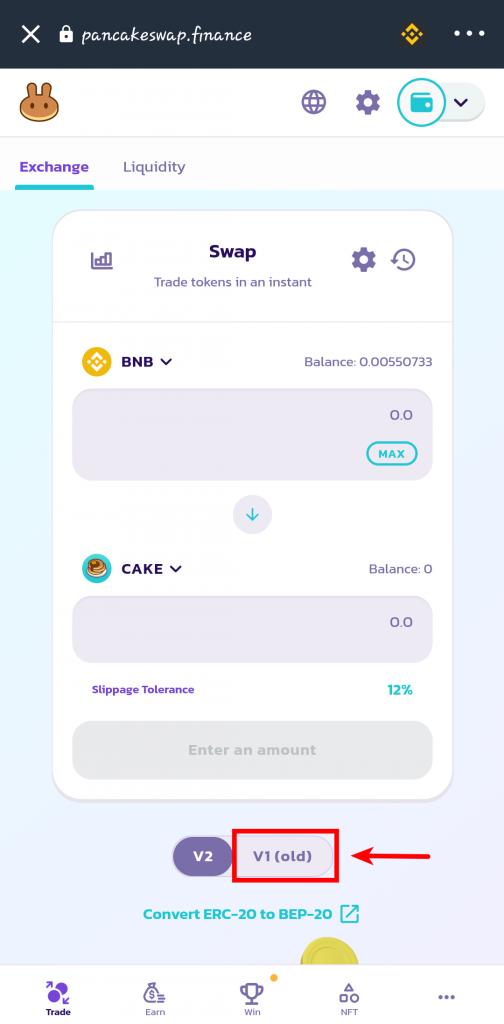
You will be shown a dialog telling you that PancakeSwap V1 is no longer supported by the PancakeSwap team, tick [I understand that V1 ….] and click on [Continue to V1 Anyway].
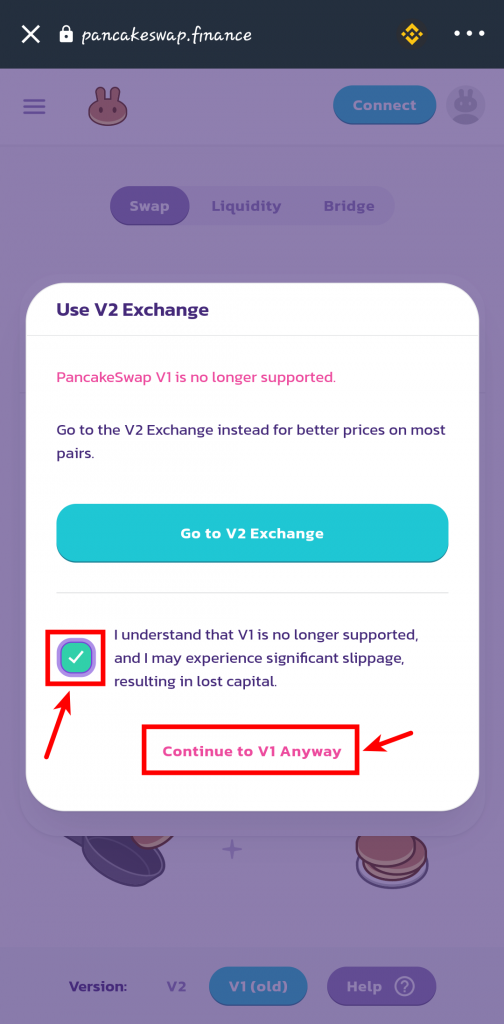
Reconnect your wallet to PancakeSwap (V1) and tap on [Unlock Wallet] then select your wallet.
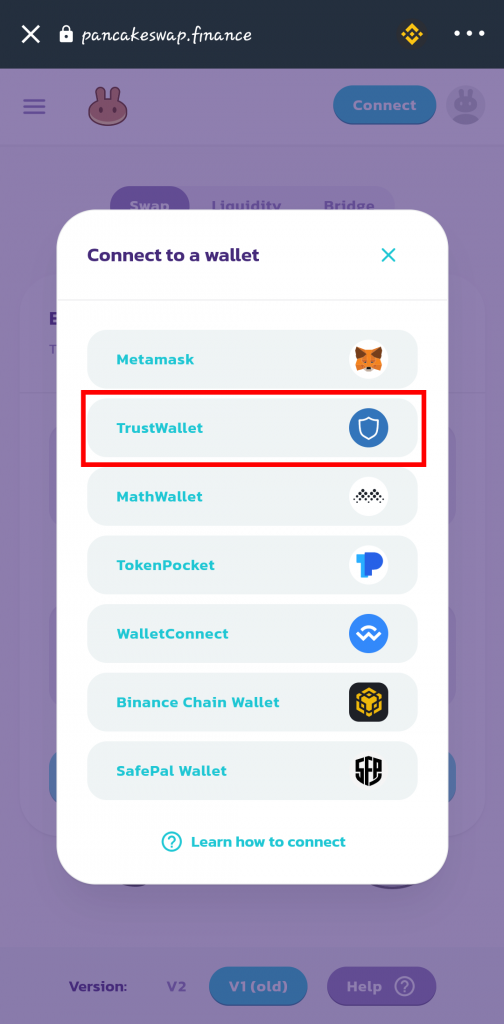
Authorize the connection on your wallet and try swapping your tokens as you did before, the error should be gone if the token pair has some liquidity on PancakeSwap V1.
If this method doesn’t fix the error on your end, try some other fixes outlined below.
Fix 2: Disable Multihops
Sometimes swapping one token for the other is not as simple as putting in one token and taking out the other from the liquidity pool since in some cases it might involve other tokens acting as a go-between (hops).
The problem with this mechanism is that the token or tokens acting as a go-between might be having some issues at the moment thereby hindering your transaction. Disabling multi hops on PancakeSwap ensures that the transaction is direct and in some cases, this fixes errors that might be stopping your trades from going through.
To disable Multihops on PancakeSwap, tap on the [Settings] icon on the top right corner of the page,
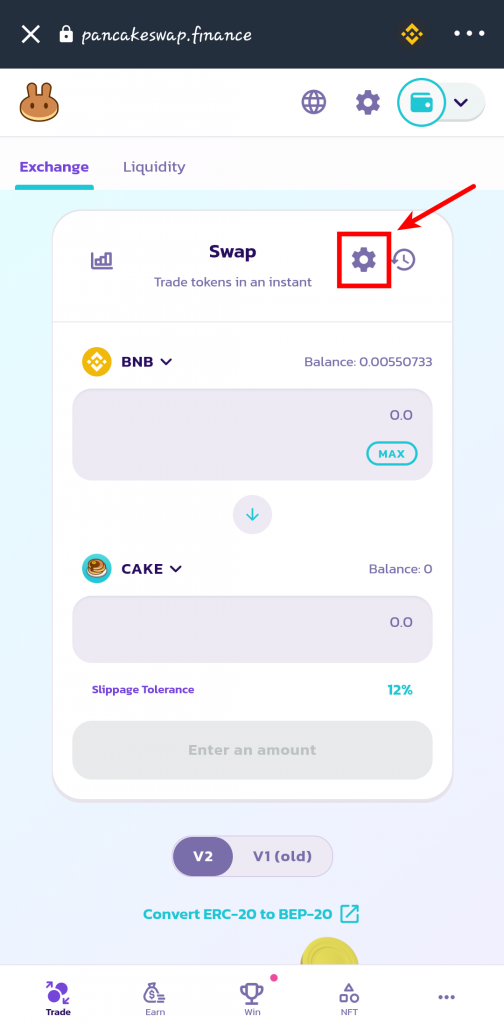
Tap on the toggle beside “Disable Multihops” and click on the [X] button to close the dialog.
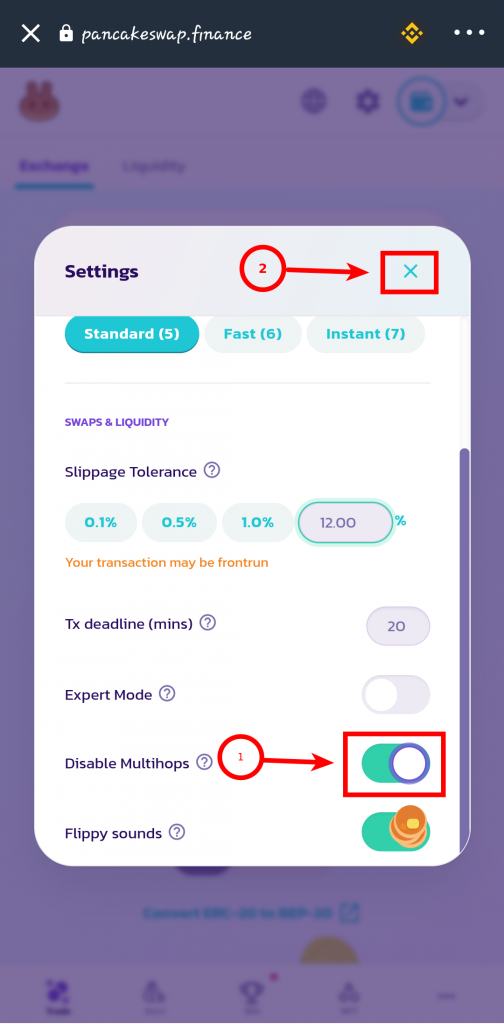
Finally, try swapping your token(s) to see if this fixes the error on PancakeSwap.
Fix 3: Trade Tokens In Smaller Bits
Trade tokens in smaller bits might not be the best decision when it comes to fees but it is one way you can solve the “price impact too high” error if the token you’re trying to purchase (or sell) has very little liquidity in the pool.
If you need to take profits or cash out from a particular token, you can try this method. To do this, just reduce the number of tokens you want to trade and execute multiple trades. The downside of this method is that you will have to pay fees multiple times instead of just once.
Fix 4: Use A DEX Aggregator
Decentralized Exchange Aggregators are blockchain-based services that serve as a unified explorer for prices and liquidity offered by decentralized exchanges.
Using a DEX aggregator means you will get access to the liquidity pools of many decentralized exchanges and not PancakeSwap alone just in case the token pair you’re trying to trade has little or no liquidity on PancakeSwap.
Two of the best Dex aggregators on the BSC network are Bogged.finance and 1nch. Trading on these platforms is quite easy, just connect your wallet, select the trading pair you want to use, input the number of tokens to swap, and click on “Swap” to execute the trade.
How To Fix “Price Impact Too High” On Uniswap (Guide)
The “price impact too high” is also a popular error faced by many users using Uniswap and not just PancakeSwap. To fix this error on Uniswap, try any of the two fixes below.
Fix 1: Switch Uniswap Versions
Just like on PancakeSwap, one of the best ways to fix the “price impact too high” error on Uniswap is by switching versions. Uniswap currently has 3 versions – V1, V2, and V3 which is the latest and default version.
Some token pairs might have some liquidity on the Uniswap V1 or Uniswap V2 but not on Uniswap V3. Switching to a version where the token has liquidity is a good way to fix the price impact error since the error is mostly caused by liquidity issues.
To switch Uniswap versions, add “?use=” + the version (V1 or V2) at the end of the URL. E.g, to switch to the Uniswap V2, just add “?use=V2” at the end of the URL of the Uniswap exchange page.
Here are the full URLs for switching versions on Uniswap
- For V3, use the normal URL (https://app.uniswap.org/#/swap) Uniswap uses V3 by default
- To switch to Uniswap V2, use this URL – https://app.uniswap.org/#/swap?use=V2
- To switch to Uniswap V1, use this URL – https://app.uniswap.org/#/swap?use=V1
Finally, click on [Connect Wallet] to reconnect your wallet then tap on [Connect] to authorize the connection.
Fix 2: Execute Transactions In Bits
You can also fix the “price impact too high error” on Uniswap by reducing the number of tokens you want to trade and swapping in bits.
Trying to trade higher amounts of a token with low liquidity will almost always result in an error on Uniswap and in some cases, trading in bits might help to bypass these errors.
Since Uniswap is an exchange for Ethereum which is known for higher gas fees, this method might not be the most efficient in terms of fees, but if you can bear the cost, trading tokens in bits is a good way to fix the “price impact too high” error on Uniswap.
Wrapping up
Liquidity issues are the major causes of the “price impact too high” error on both PancakeSwap and Uniswap and if the token you’re trying to swap has some issues with liquidity, you will almost certainly encounter errors.
Thankfully, some fixes work for getting rid of this error on both PancakeSwap and Uniswap and we have tried to highlight some of them in this guide.
Hopefully, one of the solutions outlined in this guide helped solve the price impact error on your favorite decentralized exchange.